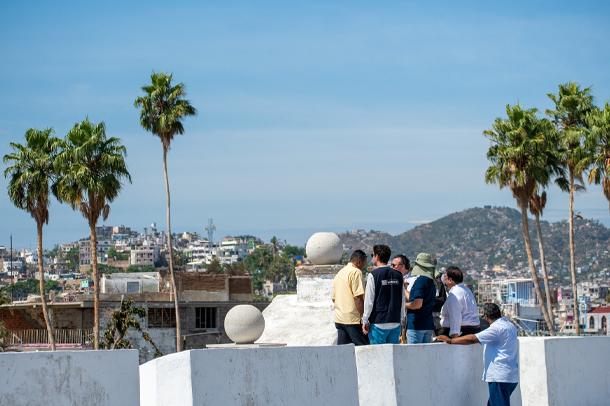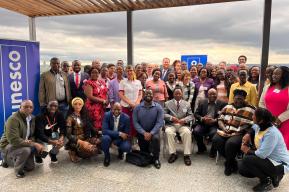News
Cultural life reactivation, a strategic pillar for the economic and social recovery of Acapulco

Acapulco, Guerrero, Mexico, February 27, 2024 - Hurricane Otis had a significant impact on museums, cultural centres, historical buildings, and overall cultural life in Acapulco. Therefore, UNESCO, in partnership with the federal and state governments, and the private sector, is working on a strategy to reactivate the rich cultural, heritage, and historical life of Acapulco, positioning culture as a strategic axis for the social and economic recovery of the city.
"The recovery of Acapulco should be seen as an opportunity to regain the culture, heritage, and history of this port, which will not only help reactivate the rich cultural life of the city but also contribute to revitalizing its economic, social, and tourist life," said Andrés Morales, UNESCO Representative for Mexico.
Efforts are underway to recover and equip properties and cultural spaces affected by the hurricane. Thanks to the donation from Daikin, a company specializing in air conditioning, with the support of UNESCO and in coordination with the Federal Ministry of Culture, the Guerrero Ministry of Culture and the local centre of the National Institute of Anthropology and History (INAH), modern ventilation equipment was provided to the Fort of San Diego, the museum of Siete Regiones (seven regions), and the public libraries of the municipality of Coyuca.

"Daikin is a Japanese company celebrating its 100th anniversary and this donation is evidence of this important legacy and commitment. The donation will greatly serve Guerrero's culture. It is worth noting that these air conditioning units are very environmentally friendly, reducing energy consumption by more than 30% and their impact on climate change. I hope this marks the beginning of a broader collaboration," said Hugo Goñi, Corporate Communications Manager at Daikin.
Arturo Martínez, Delegate of the INAH Guerrero Centre, highlighted the Manila Galleon Route and the exchange relationship forged since then between the port of Acapulco and eastern cultures, including the Japanese.
Aida Melina Martínez, Secretary of Culture of Guerrero, thanked the relationship established with the support of UNESCO with the company Daikin, an altruistic relationship that is now materialized.
Finally, Rogelio Valdovinos, Heritage Disseminator of the Fort of San Diego, emphasized the importance of using this equipment. He mentioned that nowadays air conditioning is more than a luxury, it is a necessity, both for the comfort of visitors and for the preservation of the pieces and cultural heritage exhibited in the museum. On behalf of the staff of the site, he thanked Daikin for the donation.
Acapulco is a city with a rich cultural past and present, boasting multiple examples of cultural assets, including archaeological sites and rock art, historical buildings, and examples of modern heritage architecture. Additionally, the port holds great value in historical memory, thanks to the galleons that sailed the Manila-Acapulco Route for more than 250 years, transmitting socio-cultural and economic manifestations and expressions between East and West. UNESCO declared October 8th as Galeon Day, commemorating the establishment of the Manila-Acapulco Route.
UNESCO is also supporting Acapulco in the process of returning to normal school activities and in preparation for future emergencies.










